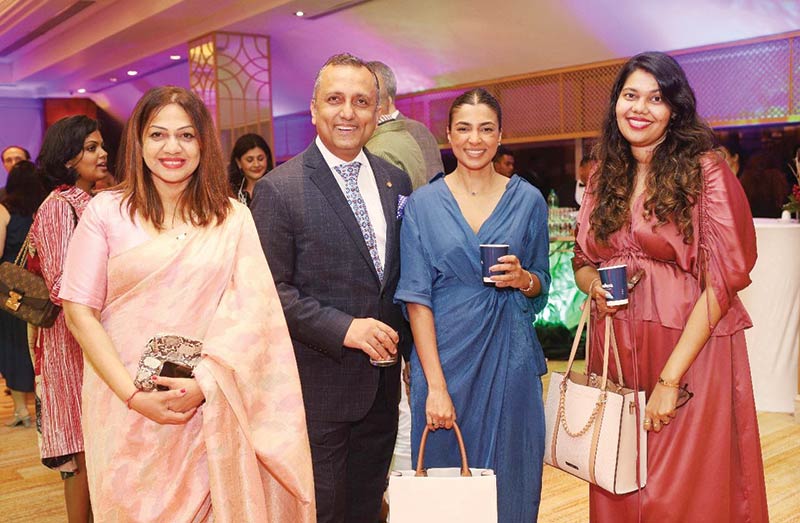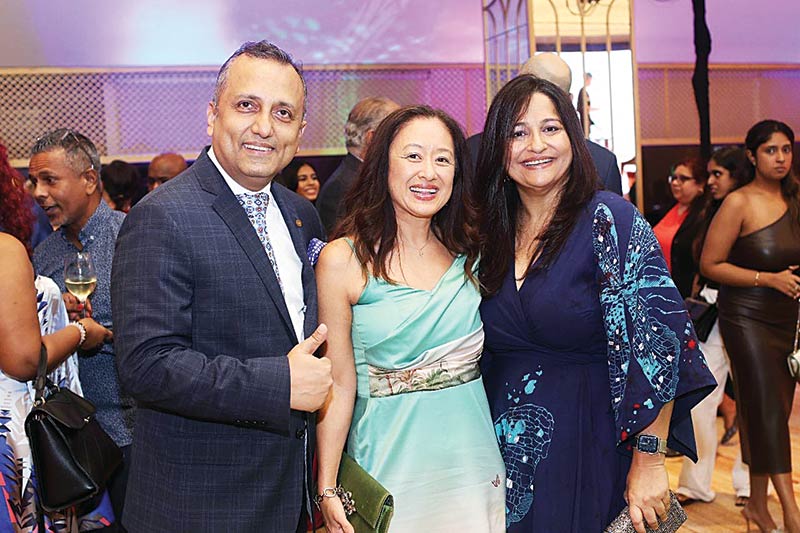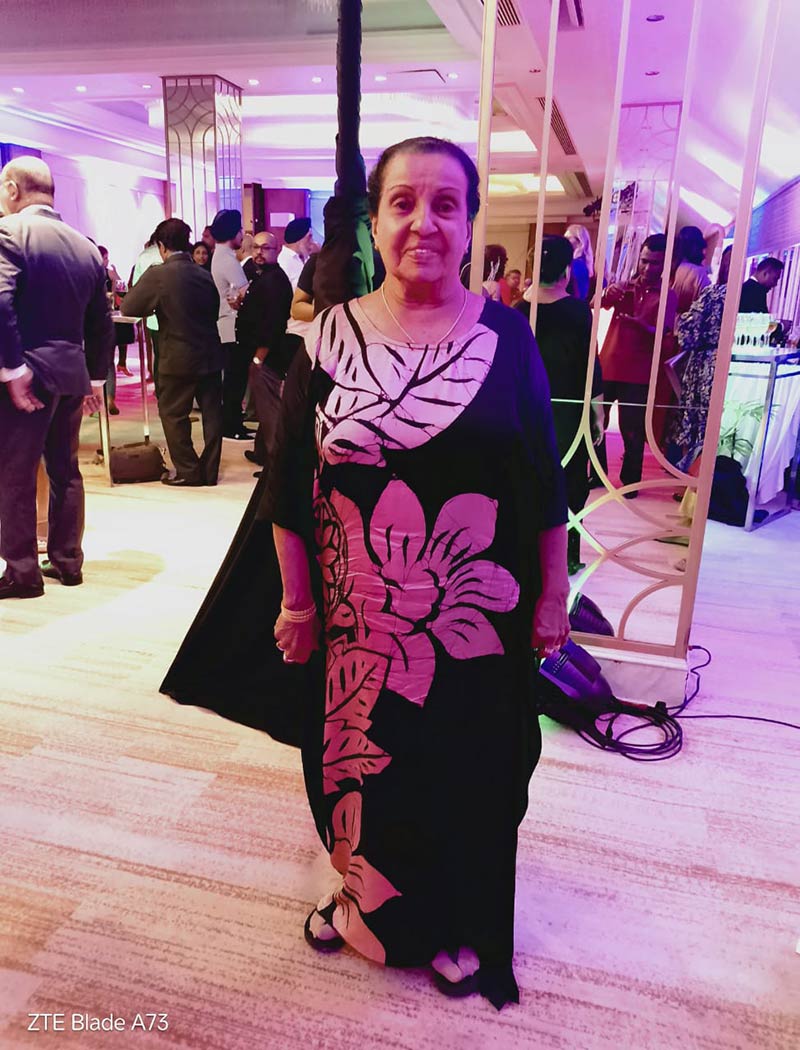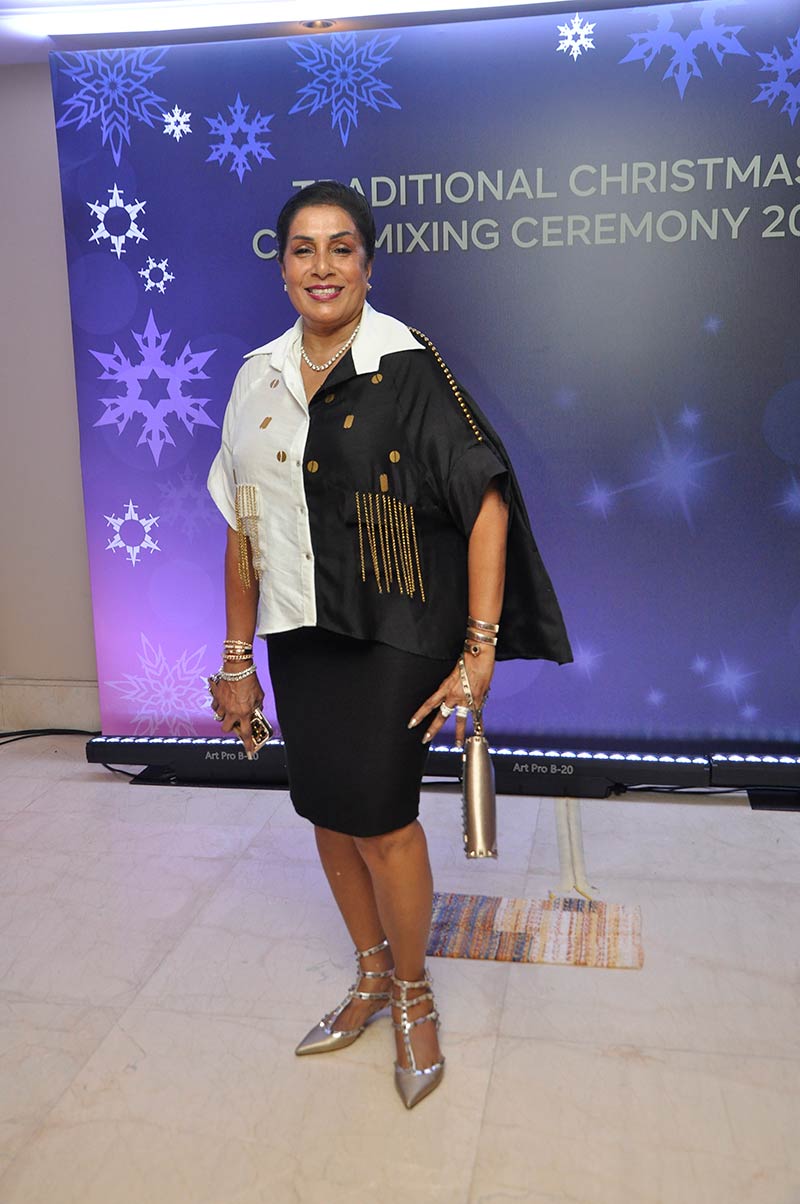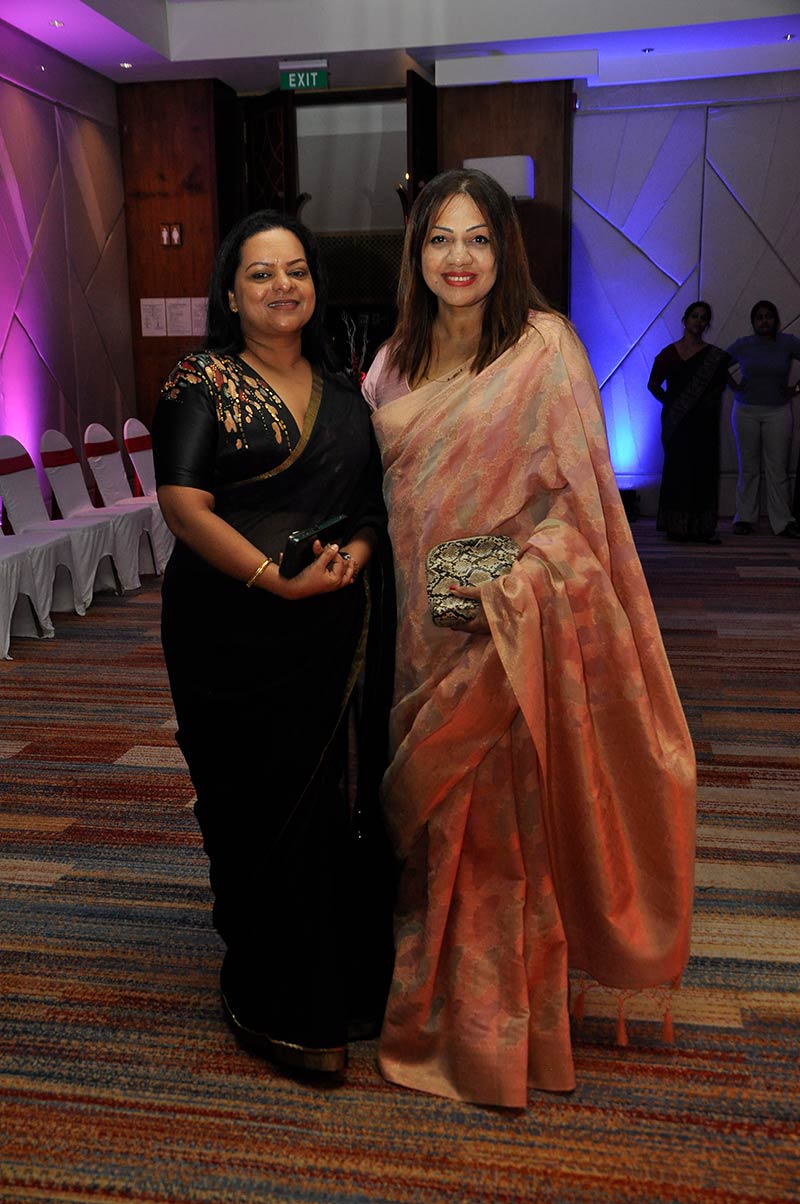Fashion
Maathra- A Tribute to National Culture

By Anura Gunasekera
Lyceum International Schools delivered its 13th edition of “Maathra“, a composite of opera, dance and theatre, at the BMICH premises, on October 12. It was an in-house creation, produced by Lyceum teachers specializing in dance, theatre and allied disciplines, and performed entirely by students selected from of the Lyceum group of schools.
When the first edition of the event was displayed to the public in 2008, it is unlikely that the organizers would have envisaged its impact on viewers, and the sense of anticipation it would go on to create in the minds of the public, year after year; nor that it would re-invent itself with each performance, reaching new levels of excellence with each successive year. That is an aspect the writer can personally vouch for, not having missed a performance since its inception.
Maathra is a rich, multi-faceted tapestry, an auditory and visual feast, woven from local narratives, folk tales, traditional dances, myths and legends, values and beliefs, and segments of the country’s rich history. It is a composite of the cultural and historical diversity that is Sri Lanka.
Maathra showcases and promotes this enchanting variety, exploring through each individual performance, the aesthetic and rhythmic elements that distinguish Sri Lankan art forms, whilst projecting the historical content. By engaging with such a broad spectrum of cultural aspects, Maathra makes a significant contribution to the broader conversation about our national identity, and inculcates in the performers and viewers, pride in that identity, and the cultural and historical wealth this country has to offer.
In a highly globalized society, connected by instant communication which indiscriminately transmits, and glamorizes, both the vulgar and the tasteful, Maathra reminds viewers that, in meaning and value, what this country possesses is absolutely unique in richness and depth. Maathra is a performance which helps all those involved, audience and participants, to re-anchor themselves to that cultural wealth, which constitute our national roots and foundation. Maathra is not just about dance, theatre and music, but also about who we Sri Lankans are. The performances cut across racial, religious and cultural divides, and embraced the national community as a whole.
The selection of themes of the latest edition was clearly designed with the above in view.
“Sigiri“, the story of the parricide king, Kashyapa, celebrated the matchless grandeur of the fortress in the sky and the cloud-maidens who adorned it, whilst “Devadasi” introduced to the audience, an ancient temple service tradition with South Indian roots. “Gaadi”, recreated vignettes of the life-style of the diminished Hulawaly community, decades ago very much part of our national landscape, whilst “Andare”, the court jester of the Sinhala kings, evoked much laughter.
“Hiru Kule” revived a fascinating legend of our roots and depicted king Ravana at his menacing best and “Tikiri Kumaru”, took the audience back to the youth of warrior king, Rajasinghe the First. “Hansa” , recalled the brilliant literary tradition of “Sandesa” poetry and “Siri Dalada”, paid homage to the sacred Tooth Relic. ‘Manikyabhiman,” was a tribute to the treasure-laden land and the gem-mining tradition of Sabaragamuwa, and “Isurumuni”, a special performance by the Lyceum alumni, brought to life the ancient lovers cast in stone.
“Nertha Yaathra” traced the evolution of traditional dance forms in Sri Lanka, and its enrichment through other influences, especially the gradual inclusion of women performers in a previously male-dominated tradition. “Siv Hela Rakun” was an accolade to the legendary origins of our nation, from the ” Yakka, Naga, Deva and Raksha”
Each item did not last more than a few minutes but the illustration of the themes, through song, dance and music, in a brilliant fusion of traditional dance styles and contemporary balletic forms, offered to the audience, vivid and unmistakable depictions of each theme.
This production of ‘Maathra” brought together 68 dedicated teachers and 762 students. A feature of the production was the wide age range of the performers. Each item constituted of at least 40 performers, ranging in age from pre-teens to late teens. Some of the performers had grown and matured in dance with the event itself, participating in at least seven to eight consecutive performances over a decade.
The event, in its totality, was conceived and led by the dynamic duo, Rasika and Nisha Kotalawela, under the guidance of Dr.Mohan Lal Grero and Dr. Mrs Kumari Grero. In fact, it is the Kotalawela duo, who have been responsible for the Maathra production from the very first instance.
The beautiful melodies which accompanied each item had been produced by renowned artists, whilst the glittering costumes, inspired by strictly traditional motifs, crafted by leading designers.
A production, involving over a 1.000 people, mostly high-spirited children, requires intricate planning, which actually begins anew, immediately, on completion of each show ! The seamless progression of items, moving from one to the other with hardly a break, with clock-work precision, despite the complex choreography, was testament to the competence of the organizing group, and the discipline of the performers themselves. The fluid coordination within and between performances, belies the fact that the cast had been assembled, just for this event, from eight Lyceum branches across five provinces.
The performance was graced by many prominent figures from the cultural, dance and theatre communities of the island. Undoubtedly, the proudest would have been the parents of the performers, watching their children displaying such virtuosity.
Lyceum International takes pride in providing appropriate platforms for its students to showcase their talents and skills. As ‘Maathra” has demonstrated each year, despite an international school’s customary detachment from national educational curricula, disciplines rooted in national culture clearly receive priority attention at Lyceum. This ensures that wherever they are as adults, the children of Lyceum remain firmly anchored to the culture which bred them.
The significance of Maathra transcends its attraction as a colourful pageant. It has a much deeper meaning and an impact. Whilst receiving an international education which prepares them for higher education abroad, the students of Lyceum, as ambassadors of our national culture, take with them, to other universities, to other lands, and to other nations, the message of our rich national heritage. That is Lyceum International School’s service to the nation.
Fashion
JOYFUL VIBES AND CHRISTMAS CHEER
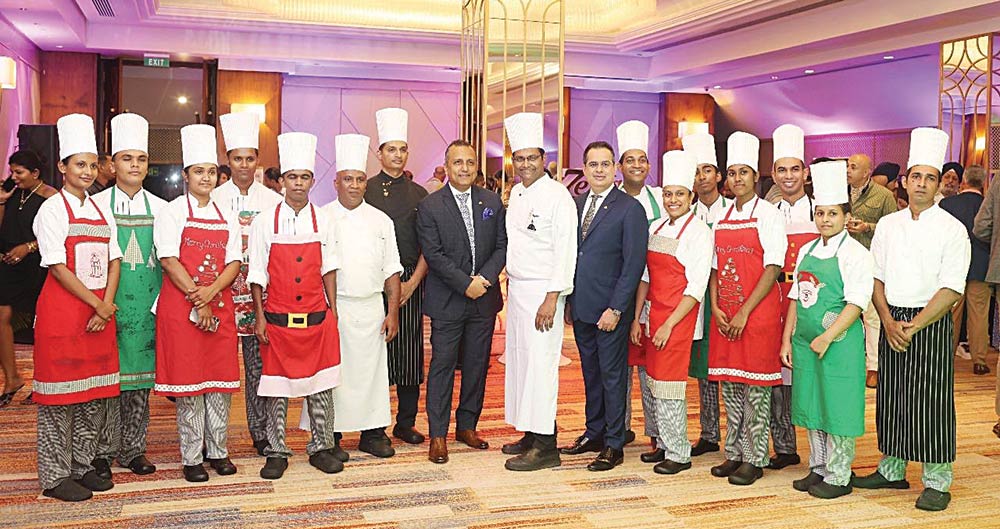
 The Christmas season officially began at Taj Samudra, Colombo with the annual Christmas cake mixing ceremony held on Friday, November 8th, at the stunning Samudra Ballroom!
The Christmas season officially began at Taj Samudra, Colombo with the annual Christmas cake mixing ceremony held on Friday, November 8th, at the stunning Samudra Ballroom!
Hosted by Samrat Datta – Area Director of Taj Maldives and Sri Lanka, the event was a festive delight, complete with an elegant cocktail spread and joyful vibes. Cheers to a season filled with warmth, tradition, and sweet memories!
Pix by Thushara Attapathu
- Onitha, Samrat, Senuri and Shafiya
- US envoy Julie Chung with Jennifer and General Manager Samrat
- Ashish, Russel and spouse, Samrat and Sai
- Trieshan
- Naeema
- Guests
- Nelum
- Priyanthi Fernando
- Tanya
Fashion
Her style edgy and chic

” Dress shabbily,and they remember the dress;dress impeccably,and they rember the woman.”Coco Chanel
 Priyanthi Fernando or Prithi as she is popularly called has her style of her own. No matter what she throws on, there is always an elegance about the way she wears her clothes. According to her she sees style as a resource to access her confidence, represent who she is. In a conversation with the Sunday Island, Priyanthi opened up her style choices and the idea she attaches to what she choose to wear. She said “I wear whatever I need to feel my confidence. For Priyanthi style is about so much more than the clothes you wear. It’s about finding what makes you feel confident . Her style blends comfort with finess perfectly. With ample sartorial guidance from her designers, her wardrobe and fashion have become a testament to refined local fashion, characterised by sarees, elegant dresses and sophisticated accessories. Through her years, her style has remained relatively consistent. Regardless of the occasion, however Priyanthi tends to wear sleek silhouettes, subtle jewellery and statement pieces that draws attention from the crowd.
Priyanthi Fernando or Prithi as she is popularly called has her style of her own. No matter what she throws on, there is always an elegance about the way she wears her clothes. According to her she sees style as a resource to access her confidence, represent who she is. In a conversation with the Sunday Island, Priyanthi opened up her style choices and the idea she attaches to what she choose to wear. She said “I wear whatever I need to feel my confidence. For Priyanthi style is about so much more than the clothes you wear. It’s about finding what makes you feel confident . Her style blends comfort with finess perfectly. With ample sartorial guidance from her designers, her wardrobe and fashion have become a testament to refined local fashion, characterised by sarees, elegant dresses and sophisticated accessories. Through her years, her style has remained relatively consistent. Regardless of the occasion, however Priyanthi tends to wear sleek silhouettes, subtle jewellery and statement pieces that draws attention from the crowd.
Known for her impecable taste and ability to wear clothes of both tradition and modernity she never fails to make a statement.Whether she is adorned in sarees or a stylish dreses or even a denim pants, her style is imitated by fashionistas and others in thesocial circles.
I love colour, my favourites include blue, black, red and white she says, She also often uses neutral shades such as beige, cream, which contributes a timeless and sophisticated look. “I often chooses the colours of my outfits to reflect the occasions and events.” style trends.
Her timeless style and national grace, has earned the title of fashionista . In every different look that you see, she experiments different hairstyles too. Every hairstyle (done by Capells Salon) is in beautiful sync with her outfits.
Even since her foray Priyanthi never made a style faux pass, because she is never swayed by trends but follow her personal style with confidence.
Fashion
UNWEILDY GROWTH IN COSMETICS INDUSTRY– A SILENT KILLER?

BY DR. DAYANATH JAYASURIYA P. C.
According to a recent global survey by D. Petruzzi released on 3 September 2024, “the cosmetics industry shows no signs of stopping: as self-care and wellness become more important to consumers worldwide, this market keeps on thriving. Despite a small setback in 2020 due to the Covid-19 pandemic, the global cosmetics market has experienced an almost incessant growth since 2004 and was forecast to generate revenues amounting to nearly 129 billion U.S. dollars by the year 2028.”
Skincare is predicted to stay number one. The production of cosmetics and beauty products is controlled by several multi-national corporations – L’Oréal, Unilever, Procter & Gamble Co., The Estee Lauder Companies, Shiseido Company, and Beiersdorf to name a few. As of 2023, the French cosmetics company L’Oréal was the leading beauty manufacturer in the world, generating revenues of over 44 billion U.S. dollars that year. The company owns the leading personal care brand worldwide, L’Oréal Paris, valued at nearly 48 billion U.S. dollars in 2023.
The cosmetics industry has benefited from the increasing popularity of social media channels such as Instagram and YouTube. These platforms are not only highly influential amongst certain demographic groups but also create a demand for beauty products and help fill the gap between cosmetics brands and consumers. In March 2024, Sandra Cires Art was the most subscribed beauty content creator on the video platform YouTube with about 16.5 million subscribers to her channel.
The cosmetics industry is not only heavily influenced or supported by social media and e-commerce, but it can now rely on new technological products, forming part of the beauty tech market, developed to improve the consumer’s journey and experience. (https://www.statista.com/topics/3137/cosmetics-industry).
A few Sundays ago, whilst my family members were busy doing their weekly grocery shopping, I took the trouble of counting the number of different cosmetic and beauty care products on sale in a medium size local supermarket. It had a staggering 1,200 plus products. I examined most products to find whether the product had been approved by the National Medicines Regulatory Authority or by the Commissioner of Ayurveda. There was merely a handful that seemed to have the stamp of approval of the latter.
Both family doctors as well as dermatologists tend to see more patients with skin diseases attributed to the use of cosmetics. In the USA, it is estimated that 85 million visit a dermatologist every year, with a significant increase in skin cancer.
Sri Lanka’s Cosmetics, Devices and Drugs Act was enacted in 1980. It was modeled on the Canadian legislation and provided a sound basis for the regulation on drugs, devices and cosmetics. In the case of cosmetics, besides regulating ingredients and their quality and the final product, there were provisions to deal with counterfeit goods, adulteration and misleading claims that compromised user safety. Several skin whitening creams containing dangerous levels of mercury were banned but without effective enforcement some of these brands are available.
Instead of making amendments to the Cosmetics, Devices and Drugs Act, an attempt was made in 2005 to repeal it and introduce a new National Medicines Regulatory Authority (NMRA) Act. It is a badly drafted piece of legislation. Even though it was to cover cosmetics, for a bizarre reason the regulation of cosmetics was left out. The reason given was the World Health Organization does not favour the regulation of cosmetics along with drugs and devices. This is a totally fabricated excuse. It is speculated that an official member of a major firm that was a leading cosmetics importer had influenced the decision to jettison the provisions on cosmetics. Even though nine long years have since lapsed, the country still lacks a comprehensive regulatory framework on cosmetics.
A new regulatory issue has also arisen. Persons alleged to have engaged in money laundering offences, often offer as an excuse that the funds represent the profits of the sale of cosmetics. If large quantities have been purchased by distributors and paid for by them, law enforcement authorities can track the details of the purchases and the transfer of profits, including the payment of VAT and income tax.
The absence of legislation cannot be used as a means to account for funds from unauthorized activities. The problem is compounded by the Ayurvedic Commissioner granting licences for creams and balms claiming to contain herbal products, without an exhaustive check as to whether banned ingredients are contained in the product. Moreover, cosmetics continue to be imported with lax controls.
There is an unfounded assumption that having a ‘white skin’ will enable students planning to go abroad for studies to easily get jobs. They have become an easy target for the illegal sale of whitening products, without realizing the heath hazards.
An urgent priority is to ensure that the country takes a fresh review of the NMRA and include the regulation of cosmetics in it and train sufficient enforcement staff to ensure that only licensed cosmetics are sold to the public.
-
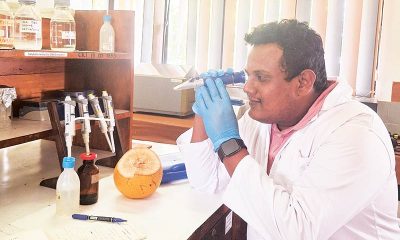
 Life style5 days ago
Life style5 days agoKing of coconuts heads for a golden future
-

 Latest News7 days ago
Latest News7 days agoColombo district preferential votes announced
-
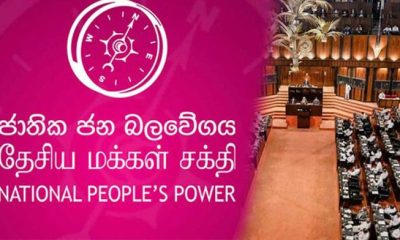
 News4 days ago
News4 days agoNPP appoints two defeated candidates as NL MPs
-

 News6 days ago
News6 days agoPresident warns his party: “We will fail if we view power as an entitlement to do as we please”
-
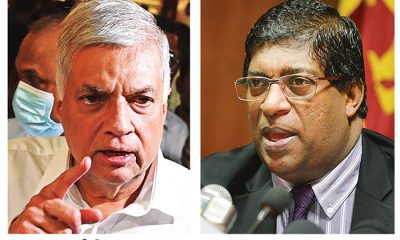
 News3 days ago
News3 days ago‘Gas Cylinder’ explodes; Ranil flays NDF Secy. for submitting Ravi’s name
-
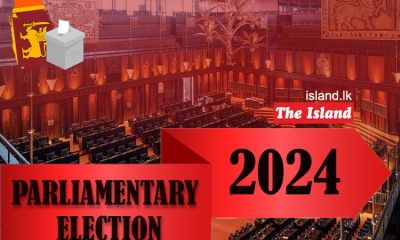
 Latest News7 days ago
Latest News7 days agoGampaha district: NPP 16, SJB 3
-

 Midweek Review2 days ago
Midweek Review2 days ago‘Ramayanizing’ Sri Lanka by Courtesy of SriLankan Airlines
-

 Sports3 days ago
Sports3 days agoMaking batting compulsory for bowlers has worked – Theekshana





